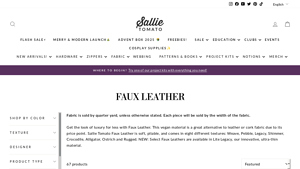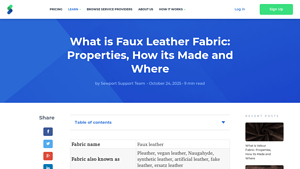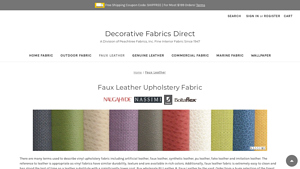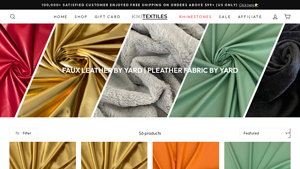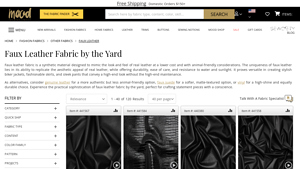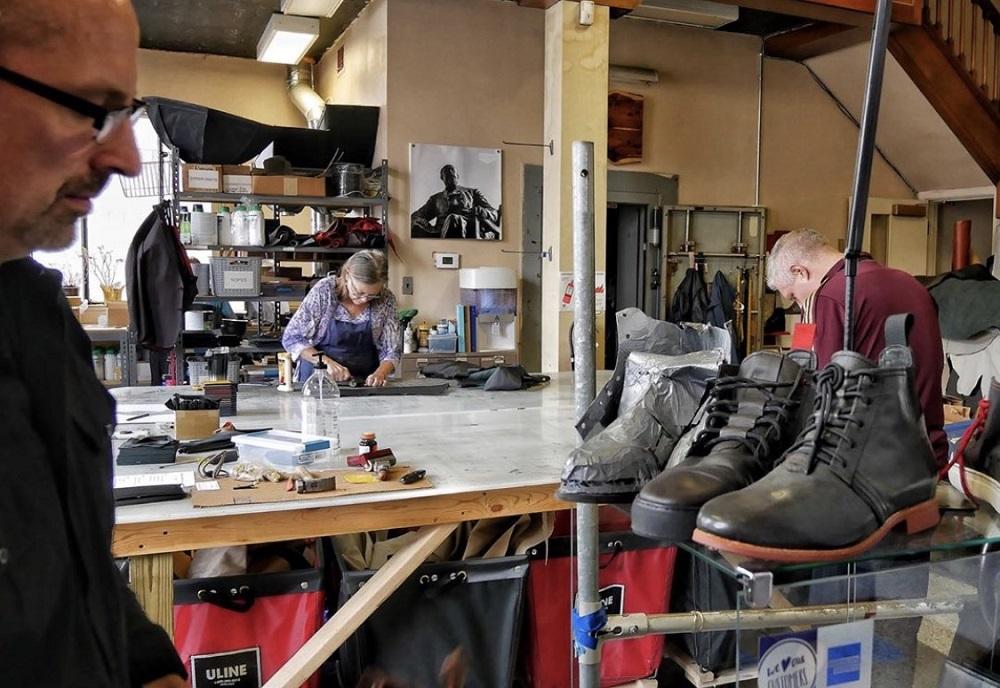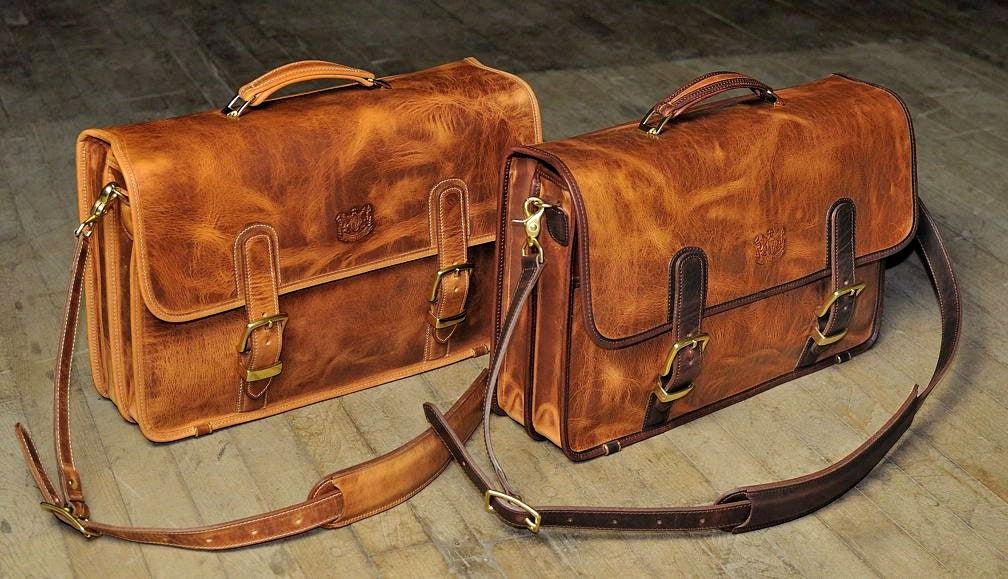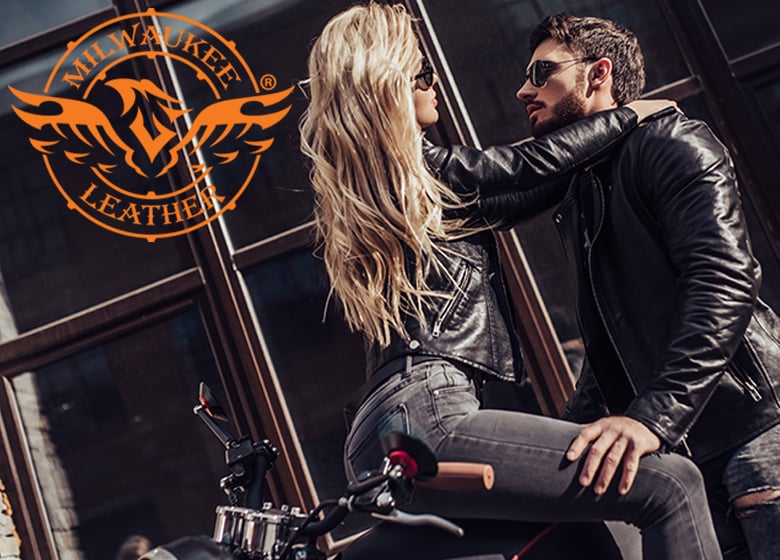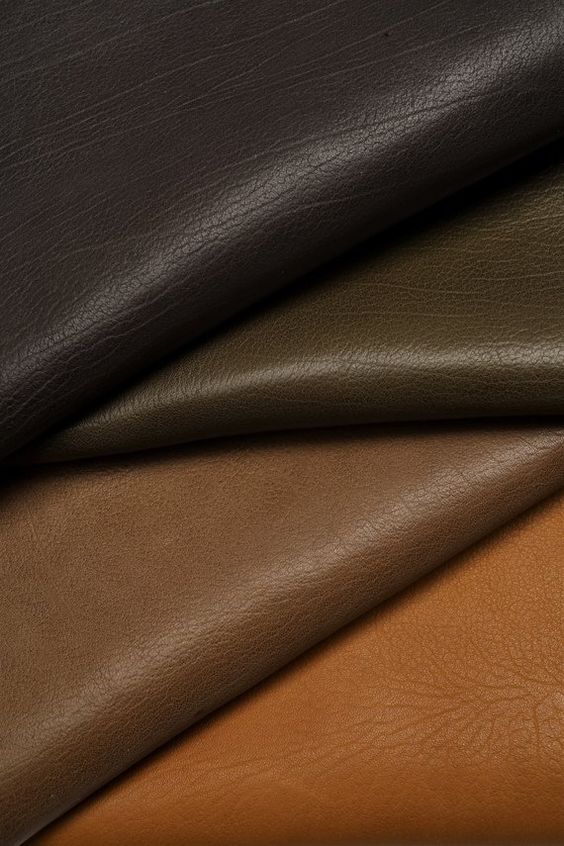Introduction: Navigating the Global Market for artificial leather fabric
The global market for artificial leather fabric presents a wealth of opportunities for B2B buyers seeking sustainable and cost-effective materials. However, navigating the myriad options—ranging from vinyl and polyurethane to innovative eco-friendly alternatives—can be challenging. This guide addresses the complexities of sourcing high-quality artificial leather fabrics, providing insights into various types, applications, and the nuances of supplier vetting. With rising demand across industries such as fashion, automotive, and furniture, understanding the intricacies of pricing, quality, and sustainability becomes crucial for informed purchasing decisions.
As an international B2B buyer from regions such as Africa, South America, the Middle East, or Europe—countries like Brazil and Germany—you face unique challenges in sourcing reliable materials that meet both budgetary constraints and quality standards. This comprehensive guide equips you with the knowledge needed to evaluate potential suppliers, assess the cost-effectiveness of different fabric types, and understand the application-specific requirements of artificial leather. From understanding the manufacturing processes to exploring trends in sustainable production, this resource empowers you to make informed, strategic decisions that align with your business objectives. By leveraging the insights offered, you can confidently navigate the global marketplace and secure the best artificial leather fabric solutions for your needs.
Table Of Contents
- Top 5 Artificial Leather Fabric Manufacturers & Suppliers List
- Introduction: Navigating the Global Market for artificial leather fabric
- Understanding artificial leather fabric Types and Variations
- Key Industrial Applications of artificial leather fabric
- 3 Common User Pain Points for ‘artificial leather fabric’ & Their Solutions
- Strategic Material Selection Guide for artificial leather fabric
- In-depth Look: Manufacturing Processes and Quality Assurance for artificial leather fabric
- Practical Sourcing Guide: A Step-by-Step Checklist for ‘artificial leather fabric’
- Comprehensive Cost and Pricing Analysis for artificial leather fabric Sourcing
- Alternatives Analysis: Comparing artificial leather fabric With Other Solutions
- Essential Technical Properties and Trade Terminology for artificial leather fabric
- Navigating Market Dynamics and Sourcing Trends in the artificial leather fabric Sector
- Frequently Asked Questions (FAQs) for B2B Buyers of artificial leather fabric
- Strategic Sourcing Conclusion and Outlook for artificial leather fabric
- Important Disclaimer & Terms of Use
Understanding artificial leather fabric Types and Variations
| Type Name | Key Distinguishing Features | Primary B2B Applications | Brief Pros & Cons for Buyers |
|---|---|---|---|
| PVC Faux Leather | Durable, waterproof, and flexible; often shiny finish | Upholstery, automotive interiors | Pros: Cost-effective, easy to clean; Cons: Lower breathability compared to natural leather. |
| PU Faux Leather | Softer texture, more breathable; often made from polyurethane | Fashion apparel, handbags, shoes | Pros: More eco-friendly than PVC; Cons: Less durable under heavy use. |
| Vegan Leather | Made from plant-based materials; ethical alternative | Eco-friendly products, accessories | Pros: Sustainable, cruelty-free; Cons: Can be more expensive. |
| Embossed Faux Leather | Textured finish resembling animal hides; available in various patterns | Fashion, upholstery, automotive | Pros: Aesthetic appeal; Cons: May require more maintenance. |
| Microfiber Leather | Soft, suede-like feel; high durability and water resistance | Apparel, upholstery, automotive | Pros: High-end look and feel; Cons: May not be as widely available. |
What are the characteristics of PVC Faux Leather and its B2B applications?
PVC (Polyvinyl Chloride) faux leather is highly valued in various industries due to its durability and waterproof properties. It is often used in upholstery for furniture and automotive interiors, as well as in fashion items like bags and jackets. When considering PVC faux leather, B2B buyers should assess the balance between cost and quality, as this material typically offers a more economical choice while sacrificing some breathability compared to natural leather.
How does PU Faux Leather differ in texture and applications?
PU (Polyurethane) faux leather is recognized for its softer texture and greater breathability, making it a preferred choice for fashion apparel, handbags, and shoes. This material is often considered more environmentally friendly than PVC because it can be made from renewable resources. Buyers should consider the intended use; while PU offers a luxurious feel, it may not withstand heavy wear as well as PVC, which could impact long-term value.
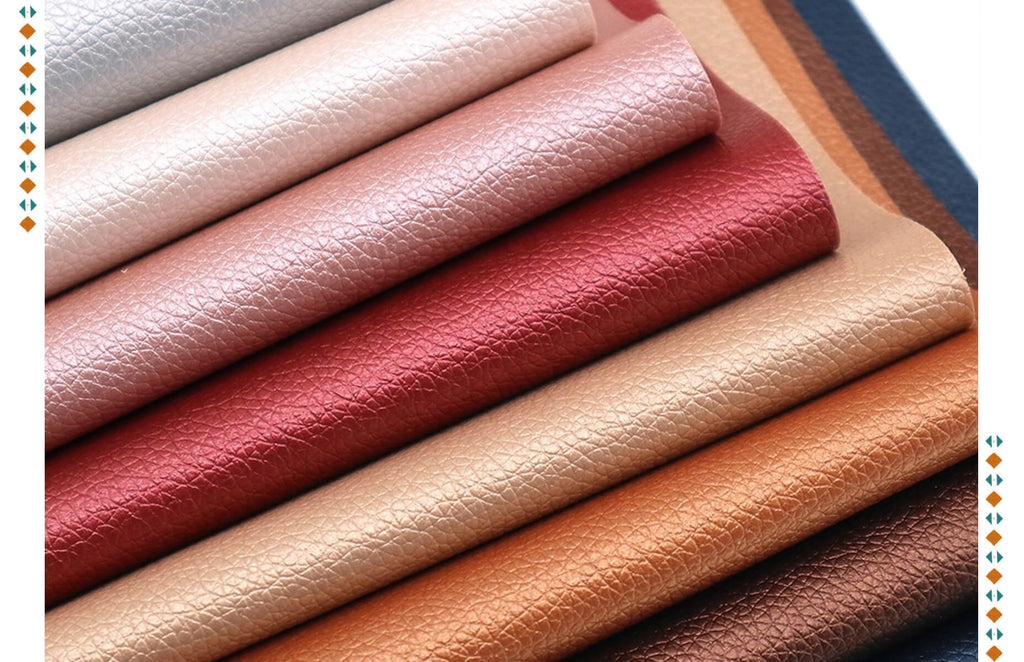
Illustrative image related to artificial leather fabric
What makes Vegan Leather an attractive option for eco-conscious buyers?
Vegan leather is crafted from plant-based materials, positioning it as an ethical alternative to traditional leather. Its applications range from eco-friendly fashion accessories to sustainable upholstery options. For B2B buyers, the key consideration is the higher price point associated with vegan leather, balanced against its sustainability benefits and appeal to environmentally conscious consumers.
Why is Embossed Faux Leather popular in fashion and automotive?
Embossed faux leather features a textured finish that mimics the appearance of genuine animal hides, making it a popular choice for fashion and automotive applications. This material is available in various patterns and designs, enhancing aesthetic appeal. Buyers should weigh the visual benefits against potential maintenance requirements, as embossed surfaces may need more care to maintain their look over time.
What are the advantages of Microfiber Leather for high-end applications?
Microfiber leather is celebrated for its soft, suede-like feel and high durability, making it suitable for luxury apparel and upholstery. Its water resistance adds to its versatility in various applications. B2B buyers should note that while microfiber leather offers a premium appearance, availability may vary, and sourcing high-quality options is crucial for ensuring customer satisfaction.
Key Industrial Applications of artificial leather fabric
| Industry/Sector | Specific Application of artificial leather fabric | Value/Benefit for the Business | Key Sourcing Considerations for this Application |
|---|---|---|---|
| Automotive | Upholstery for car seats and interiors | Offers a cost-effective, durable, and stylish alternative to genuine leather, enhancing vehicle aesthetics. | Ensure compliance with automotive safety standards and durability against wear and tear. |
| Fashion and Apparel | Jackets, bags, and footwear | Provides a vegan-friendly option that appeals to eco-conscious consumers, while maintaining a high-end look. | Assess texture variety, color options, and ease of cleaning for diverse fashion lines. |
| Furniture | Upholstery for sofas and chairs | Combines luxury with affordability, while being easy to clean and maintain, appealing to both residential and commercial markets. | Consider fire-retardant properties and colorfastness to meet industry regulations. |
| Sports Equipment | Protective gear and bags | Delivers lightweight, durable protection with a premium appearance, enhancing brand image in competitive markets. | Evaluate moisture resistance and flexibility for various sports applications. |
| Home Decor | Wall coverings and accessories | Adds aesthetic appeal and durability to interior spaces, while being cost-effective compared to traditional materials. | Look for eco-friendly options and ensure compatibility with different interior design themes. |
How is Artificial Leather Fabric Used in the Automotive Sector?
In the automotive industry, artificial leather fabric is predominantly used for upholstery in car seats, dashboards, and door panels. This material not only provides a luxurious appearance similar to genuine leather but also offers enhanced durability and resistance to wear, making it ideal for high-traffic areas. For international buyers, particularly from regions like Africa and South America, sourcing faux leather that meets automotive safety standards is crucial. Additionally, factors such as UV resistance and ease of cleaning play a significant role in selecting the right material for varying climates.
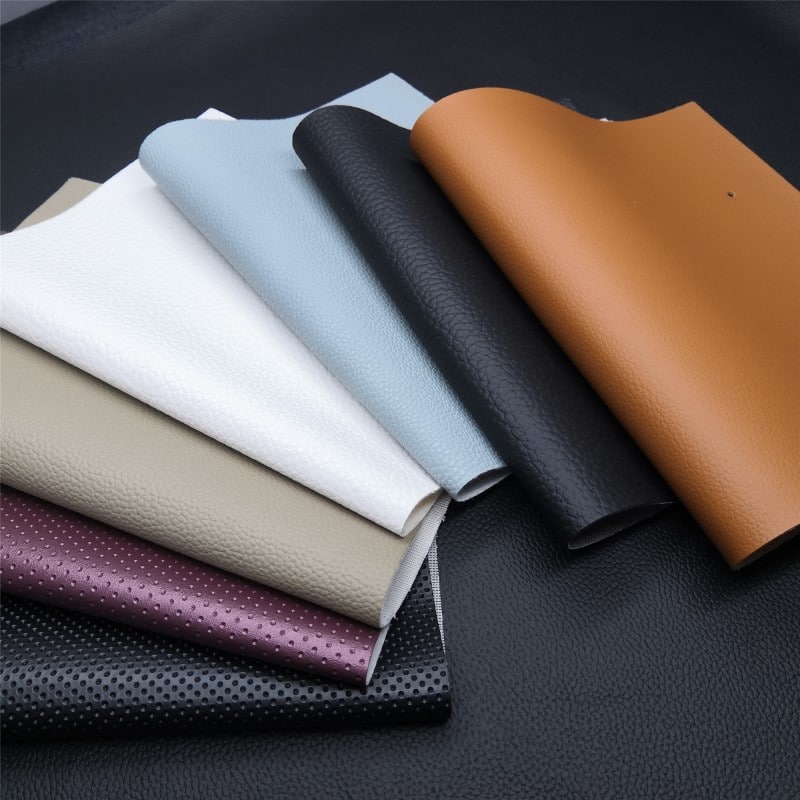
Illustrative image related to artificial leather fabric
What are the Benefits of Artificial Leather Fabric in Fashion and Apparel?
Artificial leather is widely used in the fashion and apparel sector for products such as jackets, bags, and footwear. This material allows brands to appeal to a growing demographic of eco-conscious consumers seeking vegan alternatives to traditional leather. For B2B buyers, particularly from Europe and the Middle East, it’s essential to assess the variety of textures and colors available to cater to diverse fashion trends. Furthermore, durability and ease of maintenance are critical, ensuring that the products remain appealing and functional over time.
How Does Artificial Leather Enhance Furniture Design?
In the furniture industry, artificial leather fabric is a popular choice for upholstery on sofas, chairs, and other furnishings. It offers a sophisticated look while being more affordable than genuine leather, making it accessible for both residential and commercial applications. For buyers in regions like Europe, where design trends often prioritize sustainability, sourcing eco-friendly faux leather can enhance brand reputation. Additionally, considerations such as fire-retardant properties and colorfastness are vital to ensure compliance with safety regulations.
In What Ways is Artificial Leather Fabric Utilized in Sports Equipment?
Artificial leather fabric is increasingly used in the production of sports equipment, including protective gear and bags. Its lightweight and durable nature provides athletes with necessary protection while maintaining a premium appearance that enhances brand image. For international B2B buyers, especially from South America, evaluating the moisture resistance and flexibility of the material is essential to ensure optimal performance in various sports environments. This material’s ability to withstand rigorous use while remaining stylish is a significant selling point.
What Role Does Artificial Leather Play in Home Decor?
In the home decor sector, artificial leather fabric is utilized for wall coverings, cushions, and various accessories. It adds a touch of elegance and durability to interior spaces while being cost-effective compared to traditional materials. For buyers from the Middle East and Africa, sourcing faux leather that complements diverse design themes is crucial. Additionally, eco-friendly options are gaining popularity, making it important for businesses to consider sustainability in their sourcing decisions. Compatibility with various design styles and ease of maintenance are also key factors to evaluate.
3 Common User Pain Points for ‘artificial leather fabric’ & Their Solutions
Scenario 1: Sourcing Quality Artificial Leather Fabric for Diverse Applications
The Problem: International B2B buyers often struggle with sourcing high-quality artificial leather fabric that meets their specific needs, such as durability and aesthetics. Many suppliers offer a wide range of products, but buyers may find it challenging to discern which options are truly suitable for their applications—be it upholstery, fashion, or automotive. This ambiguity can lead to wasted resources, including time and money, as they may receive products that do not meet the quality or functionality they expected.
The Solution: To effectively source artificial leather fabric, buyers should establish clear specifications based on their intended application. This includes understanding the fabric’s composition (e.g., PVC vs. polyurethane), durability ratings, and environmental impact. Engaging with suppliers who provide detailed product descriptions and samples can significantly enhance the selection process. Furthermore, attending industry trade shows or utilizing platforms that allow for direct communication with manufacturers can help buyers make informed decisions. Requesting certifications related to quality and sustainability can further ensure the chosen materials align with their brand values and customer expectations.
Scenario 2: Addressing Environmental Concerns with Artificial Leather
The Problem: As sustainability becomes increasingly important, B2B buyers face the challenge of selecting artificial leather that aligns with eco-friendly practices. Traditional faux leather is often criticized for its petroleum-based materials, which can harm the environment. Buyers need to navigate the growing market of sustainable alternatives, making it essential to identify which products are genuinely eco-friendly versus those that merely claim to be.
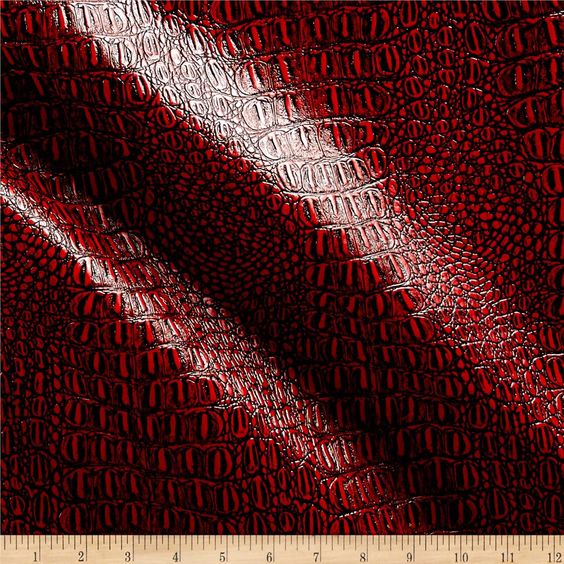
Illustrative image related to artificial leather fabric
The Solution: Buyers should look for artificial leather options made from bio-based materials or recycled plastics. It’s crucial to request detailed information from suppliers about the sourcing and production processes of their fabrics. Additionally, seeking out certifications, such as Global Recycled Standard (GRS) or OEKO-TEX, can provide assurance of the fabric’s environmental impact. Implementing a sustainability checklist that evaluates factors such as recyclability, resource consumption during production, and carbon footprint can aid in selecting the right materials. Collaborating with suppliers committed to sustainable practices can also enhance the buyer’s brand image and appeal to environmentally conscious consumers.
Scenario 3: Ensuring Performance and Longevity of Artificial Leather in Different Climates
The Problem: B2B buyers operating in diverse geographical regions may face issues with the performance of artificial leather in varying climates. For instance, fabrics that perform well in humid environments may not withstand dry conditions, leading to issues like cracking or fading. This inconsistency can negatively impact the end product’s quality, resulting in customer dissatisfaction and increased returns.
The Solution: To mitigate climate-related performance issues, buyers should conduct thorough research into the specific properties of artificial leather, including its breathability, moisture-wicking capabilities, and UV resistance. Engaging with suppliers who offer climate-specific solutions can be beneficial. For instance, selecting fabrics designed for marine applications may be ideal for humid or coastal regions, while heavy-duty options could be better suited for arid climates. Conducting field tests or pilot projects with small batches of fabric can provide valuable insights into how the material behaves under local conditions. Furthermore, building strong relationships with suppliers who understand regional challenges can lead to tailored solutions and better product reliability.
Strategic Material Selection Guide for artificial leather fabric
What Are the Key Materials Used in Artificial Leather Fabric?
When selecting artificial leather fabric, understanding the various materials available is crucial for B2B buyers. Each type of material offers unique properties, advantages, and disadvantages that can significantly influence the end product’s performance and suitability for specific applications.
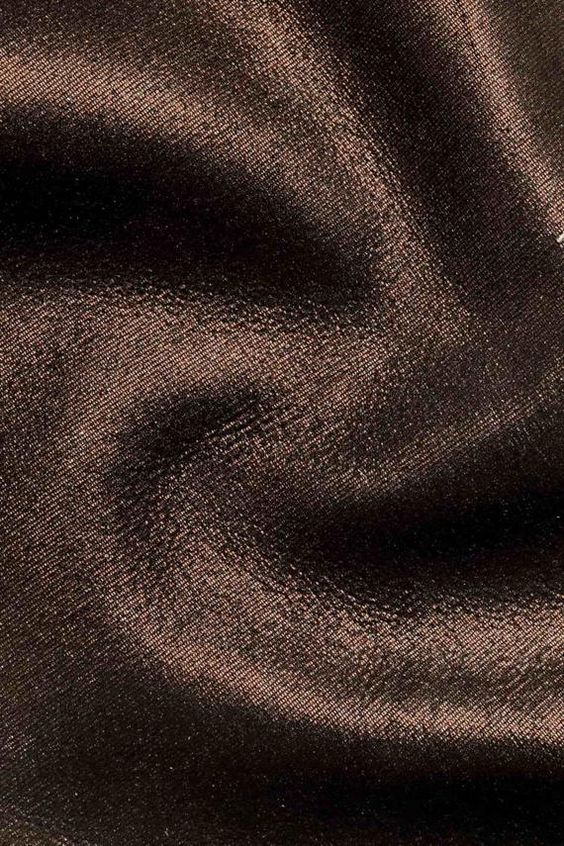
Illustrative image related to artificial leather fabric
What Are the Properties of PVC Faux Leather?
Polyvinyl Chloride (PVC) is one of the most common materials used in faux leather production. It is known for its durability and resistance to moisture, making it suitable for a variety of applications, including upholstery and fashion items. PVC faux leather can withstand high temperatures and is relatively easy to clean, which adds to its appeal.
Pros: PVC is cost-effective, widely available, and offers a high-end look at a lower price point compared to genuine leather. Its resistance to tearing and wrinkling makes it a popular choice for products requiring longevity.
Cons: However, PVC is less breathable than other materials, which can lead to discomfort in certain applications, such as clothing. Additionally, the production process can involve harmful chemicals, raising environmental concerns.
Impact on Application: PVC faux leather is often used in furniture, automotive interiors, and fashion accessories. Its compatibility with various media, such as printing and embossing, allows for creative customization.
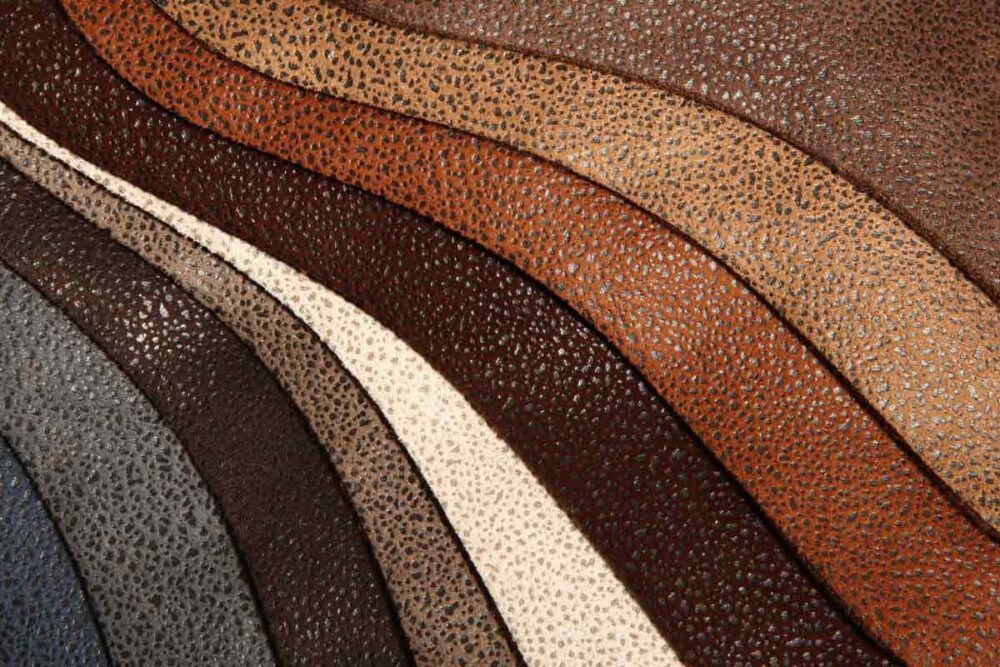
Illustrative image related to artificial leather fabric
Considerations for International Buyers: Buyers from regions like Europe and South America should ensure that the PVC used complies with environmental regulations, such as REACH in the EU. Understanding local market preferences for sustainability can also influence purchasing decisions.
How Does PU Faux Leather Compare?
Polyurethane (PU) faux leather is another popular choice, known for its soft texture and flexibility. It mimics the look and feel of genuine leather more closely than PVC, making it a preferred option for high-end applications.
Pros: PU is more environmentally friendly than PVC, as it does not contain harmful chemicals. It is also more breathable, making it suitable for clothing and accessories.
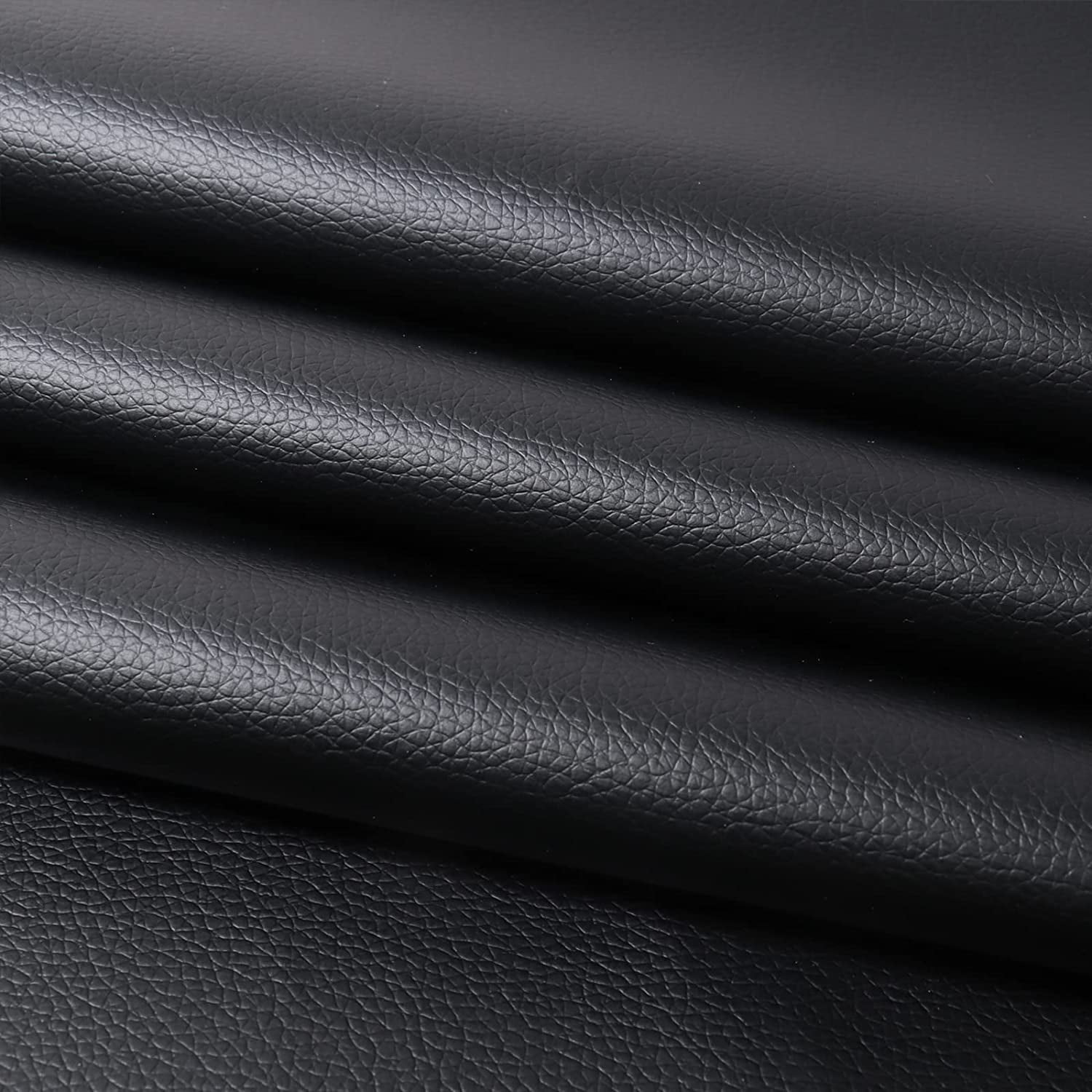
Illustrative image related to artificial leather fabric
Cons: On the downside, PU is generally more expensive than PVC and may not be as durable under heavy use. It can also be prone to wear and tear over time, especially in high-friction applications.
Impact on Application: PU faux leather is commonly used in fashion items, handbags, and upholstery where a luxurious appearance is desired. Its compatibility with dyeing and printing processes enhances its appeal for custom designs.
Considerations for International Buyers: Buyers should look for PU materials that meet international standards such as ASTM or DIN for quality assurance. Additionally, the demand for eco-friendly materials is rising, particularly in European markets.
What Are the Benefits of Microfiber Faux Leather?
Microfiber faux leather, made from polyester or nylon fibers, offers a unique alternative to traditional synthetic leathers. It is lightweight, durable, and resistant to stains, making it an excellent choice for various applications.
Pros: Microfiber is highly breathable and has a soft, suede-like texture that many consumers find appealing. Its resistance to wear and fading enhances its longevity.
Cons: However, microfiber can be more expensive than both PVC and PU options. Additionally, it may require special cleaning methods to maintain its appearance.
Impact on Application: Microfiber is often used in high-end upholstery, automotive interiors, and fashion accessories, where durability and aesthetics are paramount.
Considerations for International Buyers: Buyers should verify that microfiber products comply with relevant standards for durability and safety. Understanding local preferences for fabric texture and performance can also guide material selection.
How Does Vegan Leather Fit into the Market?
Vegan leather, often made from plant-based materials or recycled synthetics, is gaining traction in the market. It appeals to environmentally conscious consumers and businesses.
Pros: Vegan leather is biodegradable and often produced with fewer harmful chemicals. Its versatility allows it to be used in a wide range of applications.
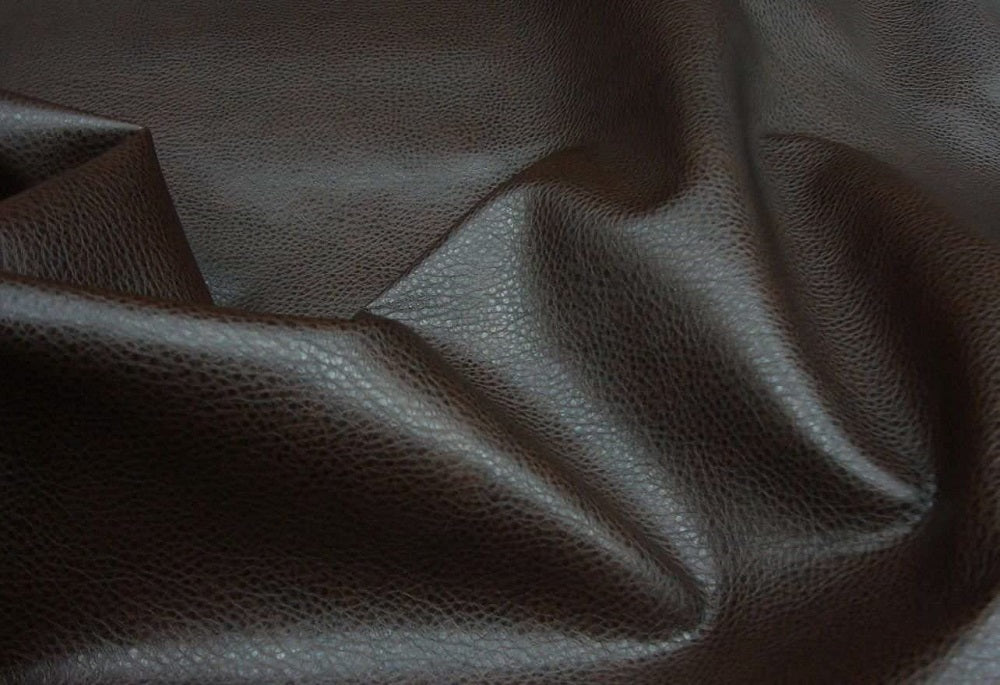
Illustrative image related to artificial leather fabric
Cons: The primary drawback is that vegan leather can vary significantly in quality, and lower-grade options may not offer the same durability as traditional synthetic leathers.
Impact on Application: Vegan leather is suitable for fashion, upholstery, and accessories, particularly in markets where sustainability is a key selling point.
Considerations for International Buyers: Buyers should ensure that vegan leather options meet local certifications for sustainability and quality. Understanding regional preferences for eco-friendly products can enhance marketability.
Summary Table of Material Selection
| Material | Typical Use Case for artificial leather fabric | Key Advantage | Key Disadvantage/Limitation | Relative Cost (Low/Med/High) |
|---|---|---|---|---|
| PVC Faux Leather | Upholstery, automotive interiors, fashion accessories | Cost-effective and durable | Less breathable, environmental concerns | Low |
| PU Faux Leather | Fashion items, handbags, upholstery | Closer to genuine leather feel | More expensive, less durable | Medium |
| Microfiber Faux Leather | High-end upholstery, automotive interiors | Lightweight, stain-resistant | Higher cost, special cleaning needed | High |
| Vegan Leather | Fashion, upholstery, accessories | Eco-friendly and versatile | Quality can vary significantly | Medium |
This guide provides actionable insights for B2B buyers, enabling informed decisions in the selection of artificial leather fabrics tailored to their specific market needs and compliance requirements.
In-depth Look: Manufacturing Processes and Quality Assurance for artificial leather fabric
What Are the Main Stages in the Manufacturing Process of Artificial Leather Fabric?
The manufacturing process of artificial leather, or faux leather, is a multi-step procedure that involves several key stages: material preparation, forming, assembly, and finishing. Each stage is critical to producing high-quality products that meet international standards and customer expectations.
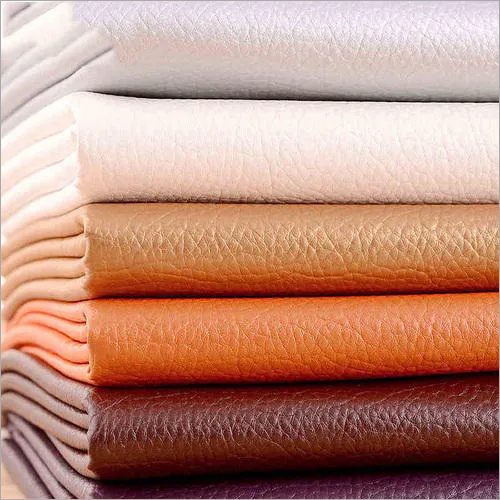
Illustrative image related to artificial leather fabric
Material Preparation
The process begins with the selection of raw materials, which primarily include synthetic polymers like polyvinyl chloride (PVC) or polyurethane (PU). The chosen material undergoes a chemical treatment to enhance its properties, such as flexibility, durability, and water resistance. Additionally, additives are incorporated to achieve desired textures and colors. Quality control starts at this stage, ensuring that materials meet specific criteria before moving forward.
Forming
Once the materials are prepared, they are subjected to forming techniques. Common methods include extrusion and coating. In extrusion, the polymer is melted and shaped into sheets, while coating involves applying a layer of the polymer onto a fabric substrate to create a leather-like surface. Both techniques require precision to ensure uniform thickness and texture, critical factors for the end product’s appearance and usability.
Assembly
Following forming, the assembly stage involves cutting the artificial leather into specified dimensions based on product requirements. This can include patterns for garments, upholstery, or accessories. Automated cutting machines are often employed to enhance efficiency and accuracy. Additionally, sewing and bonding techniques are utilized to join different parts, ensuring that seams are robust and aesthetically pleasing.
Finishing
The final stage is finishing, which enhances the aesthetic and functional qualities of the artificial leather. This may involve treatments such as embossing, dyeing, or applying protective coatings. The finishing process not only influences the product’s look but also its durability and maintenance requirements. Quality checks during this stage are crucial, as they help identify any defects before the product reaches the market.
What International Standards Govern the Quality Assurance of Artificial Leather Fabric?
Quality assurance in the manufacturing of artificial leather is paramount, particularly for B2B transactions where reliability and consistency are crucial. Several international standards guide this process, with ISO 9001 being one of the most recognized. This standard focuses on establishing a quality management system (QMS) that helps organizations meet customer and regulatory requirements while continually improving their processes.
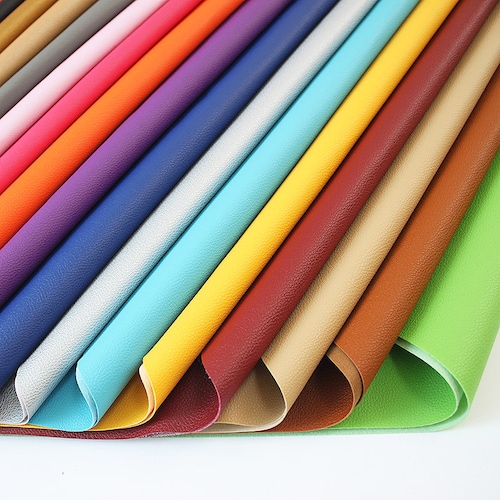
Illustrative image related to artificial leather fabric
In addition to ISO 9001, specific industry standards such as CE marking (for products sold in the European Economic Area) and API standards (for products used in the petroleum and natural gas industries) may apply. These certifications ensure that the products meet safety, health, and environmental protection requirements.
What Are the Key Quality Control Checkpoints in the Manufacturing Process?
Quality control (QC) checkpoints are integrated throughout the manufacturing process to maintain high standards. These checkpoints typically include:
-
Incoming Quality Control (IQC): This initial checkpoint assesses the quality of raw materials before they enter the production line. Ensuring that only high-quality materials are used is crucial for the final product’s integrity.
-
In-Process Quality Control (IPQC): Throughout the manufacturing stages, IPQC involves regular inspections to monitor the production process. This may include checking the thickness of the material during the forming stage or inspecting seams during assembly.
-
Final Quality Control (FQC): After the finishing stage, FQC is conducted to ensure that the final product meets all specifications and quality standards. This includes visual inspections, tactile assessments, and testing for properties such as durability, water resistance, and color fastness.
How Can B2B Buyers Verify Supplier Quality Control Practices?
For international B2B buyers, verifying the quality control practices of suppliers is essential to ensure product reliability. Here are several methods to achieve this:
-
Supplier Audits: Conducting on-site audits allows buyers to assess the supplier’s manufacturing processes, quality control measures, and compliance with international standards. This firsthand evaluation is invaluable for building trust.
-
Quality Reports: Requesting detailed QC reports can provide insights into the supplier’s quality management practices. These reports should outline the results of inspections, testing methods used, and any corrective actions taken for defects.
-
Third-Party Inspections: Engaging third-party inspection services can provide an unbiased evaluation of the supplier’s quality control processes. These organizations often have expertise in specific industries and can offer comprehensive assessments.
What Are the Common Testing Methods for Artificial Leather Fabric?
Testing methods for artificial leather typically focus on evaluating various properties to ensure product quality. Common tests include:
-
Tensile Strength Testing: This assesses the material’s resistance to breaking under tension, which is critical for durability in applications like upholstery and apparel.
-
Water Resistance Testing: This involves subjecting the material to water exposure to determine its ability to repel moisture, an essential characteristic for products used in outdoor settings.
-
Abrasion Resistance Testing: This measures how well the artificial leather can withstand wear and tear, which is particularly important for high-usage items like bags and furniture.
-
Color Fastness Testing: This evaluates the material’s ability to retain color when exposed to light, washing, and rubbing, ensuring that products maintain their aesthetic appeal over time.
What Nuances Should International B2B Buyers Consider Regarding Quality Control?
For B2B buyers, particularly those from diverse regions such as Africa, South America, the Middle East, and Europe, understanding the nuances of quality control is vital. Different regions may have varying standards and expectations regarding product quality. For instance, European buyers might prioritize CE certifications, while buyers in other regions may focus on cost-effectiveness.
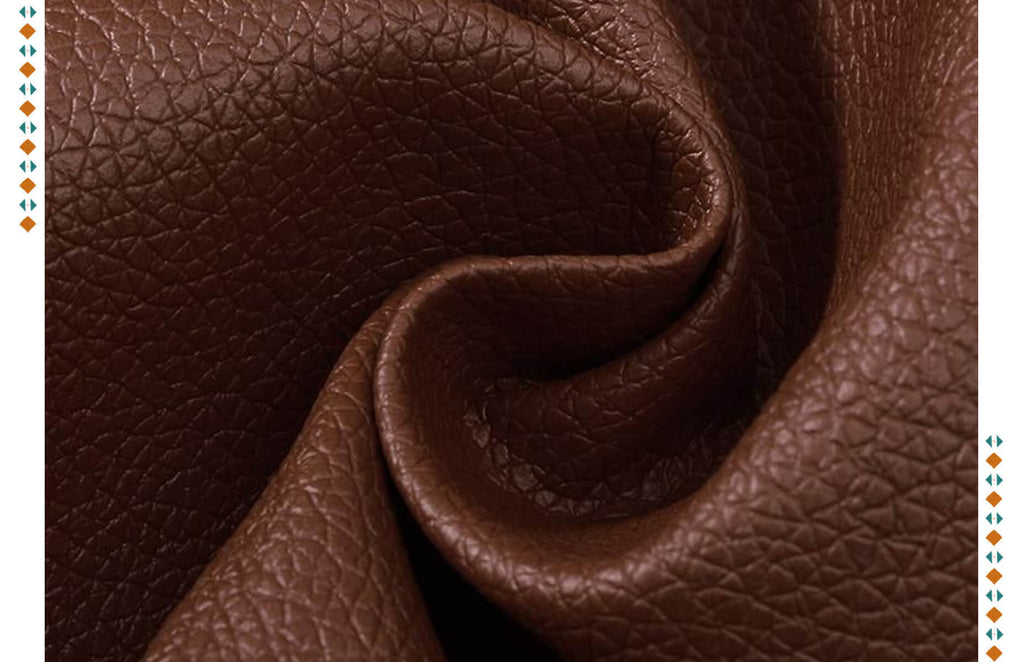
Illustrative image related to artificial leather fabric
Additionally, cultural differences in business practices and communication styles can impact supplier relationships. Establishing clear expectations and maintaining open lines of communication can help mitigate misunderstandings and foster successful partnerships.
In conclusion, a thorough understanding of the manufacturing processes and quality assurance practices for artificial leather fabric is essential for B2B buyers. By focusing on the key stages of production, relevant standards, quality checkpoints, verification methods, and testing protocols, buyers can make informed decisions and ensure they source high-quality products that meet their specific needs.
Practical Sourcing Guide: A Step-by-Step Checklist for ‘artificial leather fabric’
To assist B2B buyers in successfully sourcing artificial leather fabric, this guide outlines a clear and actionable checklist. By following these steps, buyers can ensure they make informed decisions that align with their business needs and quality standards.
Step 1: Define Your Technical Specifications
Before starting your search for artificial leather fabric, it’s essential to establish your technical specifications. Consider factors such as thickness, texture, color, and intended use (e.g., upholstery, apparel, or accessories). Clear specifications will help you communicate effectively with suppliers and ensure that the materials you receive meet your project requirements.
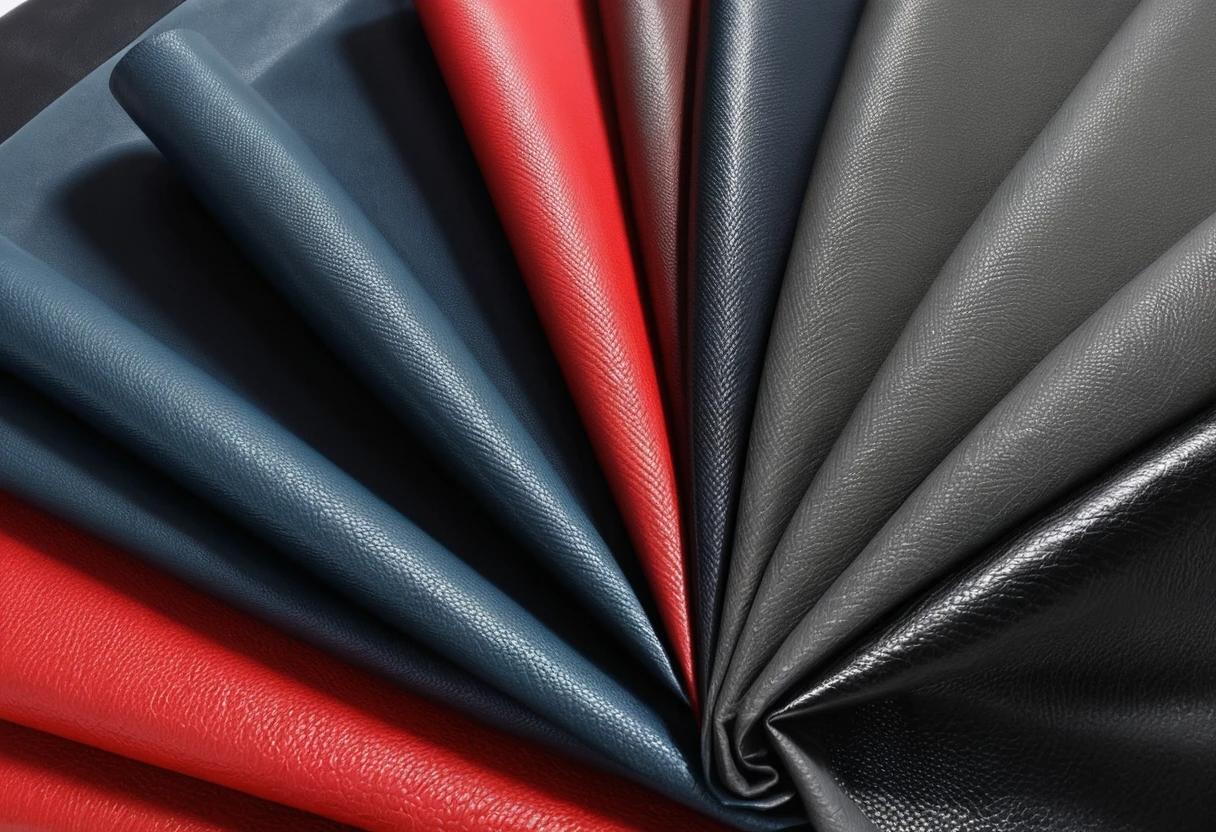
Illustrative image related to artificial leather fabric
Step 2: Research Market Trends and Demand
Understanding current market trends is vital for making strategic sourcing decisions. Research which types of artificial leather are in high demand in your target markets, such as Europe, Africa, or South America. This knowledge will allow you to align your procurement strategy with market needs, potentially increasing your competitiveness and profitability.
Step 3: Evaluate Potential Suppliers
Conduct thorough evaluations of potential suppliers to ensure reliability and quality. Look for companies with a proven track record in the artificial leather industry. Request company profiles, case studies, and references from other businesses in similar sectors. Be wary of suppliers with limited transparency or negative feedback.
- Key aspects to verify:
- Years of experience in manufacturing artificial leather.
- Customer reviews and testimonials.
Step 4: Check Material Certifications and Compliance
It is crucial to ensure that the artificial leather fabric complies with international quality and safety standards. Request certification documents that demonstrate compliance with regulations such as REACH (Registration, Evaluation, Authorisation, and Restriction of Chemicals) or Oeko-Tex. This step not only protects your brand but also assures your customers of the product’s quality and safety.
Step 5: Request Samples for Evaluation
Once you have shortlisted suppliers, request samples of the artificial leather fabric you are interested in. This step allows you to assess the quality, texture, and durability of the materials firsthand. Evaluate the samples based on your previously defined specifications to ensure they meet your expectations.
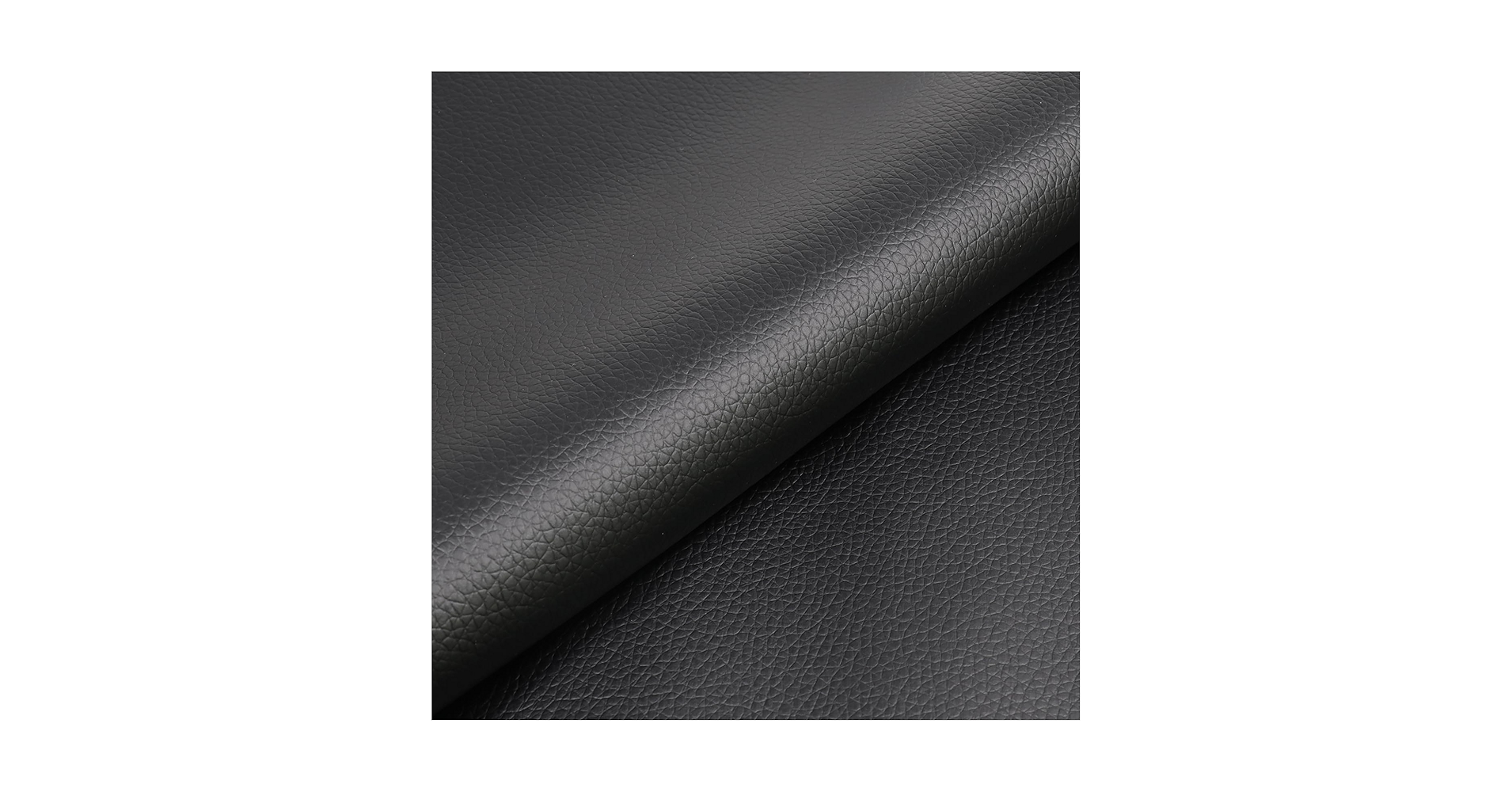
Illustrative image related to artificial leather fabric
- Considerations for evaluation:
- Softness and flexibility.
- Resistance to wear and tear.
Step 6: Negotiate Pricing and Terms
Negotiation is a crucial step in the sourcing process. Engage in discussions about pricing, payment terms, and delivery schedules. Be prepared to negotiate volume discounts, especially if you are placing large orders. Establishing clear terms upfront can prevent misunderstandings and foster a good relationship with your supplier.
Step 7: Establish Quality Control Procedures
After selecting a supplier, it’s vital to implement quality control procedures for your orders. Define quality benchmarks and inspection processes to ensure that the delivered products meet your specifications. Regular communication with your supplier during production can help mitigate potential issues before they arise.
By following this checklist, B2B buyers can navigate the complexities of sourcing artificial leather fabric with confidence, ensuring they select the right materials for their needs while fostering strong supplier relationships.
Comprehensive Cost and Pricing Analysis for artificial leather fabric Sourcing
When sourcing artificial leather fabric, understanding the comprehensive cost structure is crucial for B2B buyers, particularly those operating across diverse markets such as Africa, South America, the Middle East, and Europe. This analysis will cover the key cost components, price influencers, and provide actionable buyer tips for effective procurement.
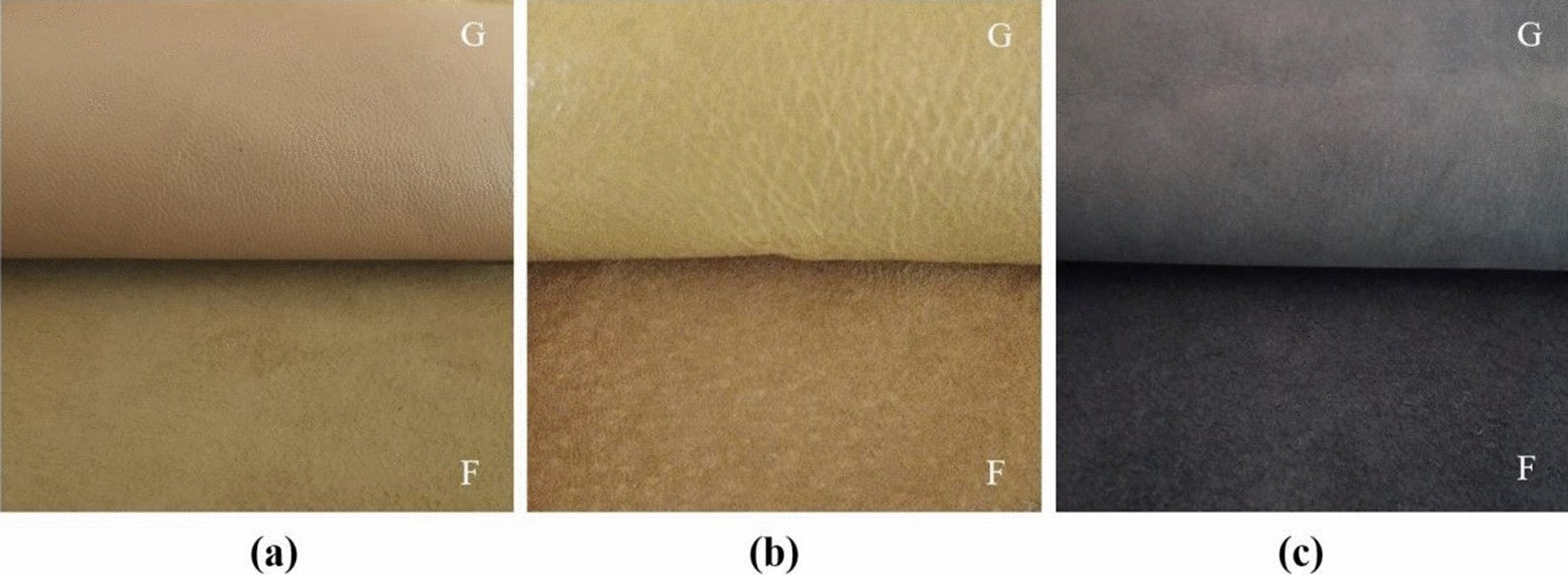
Illustrative image related to artificial leather fabric
What Are the Key Cost Components in Artificial Leather Fabric?
The cost structure for artificial leather fabric can be broken down into several components:
-
Materials: The primary raw materials used in artificial leather include PVC (polyvinyl chloride) and PU (polyurethane), which can vary in price based on market fluctuations and availability. Sustainable options, such as those made from vegetable oils, may also be considered but typically come at a higher cost.
-
Labor: Labor costs can vary significantly depending on the region of production. Countries with lower labor costs, such as those in Asia, may offer competitive pricing, while European manufacturers may have higher labor costs reflecting local wage standards.
-
Manufacturing Overhead: This includes expenses related to production facilities, machinery maintenance, and utilities. Efficient production processes can help minimize these costs.
-
Tooling: Initial tooling costs for molds and equipment can be substantial, especially for custom designs. Buyers should consider these costs when requesting bespoke fabric patterns.
-
Quality Control (QC): Ensuring that products meet specific standards is essential. QC processes may add to the overall cost, but they are crucial for maintaining quality and reducing returns.
-
Logistics: Transportation costs can significantly impact the total cost, especially for international shipments. Factors such as shipping method, distance, and customs duties must be considered.
-
Margin: Suppliers typically include a profit margin in their pricing. This can vary widely based on market conditions and the supplier’s positioning.
What Factors Influence the Pricing of Artificial Leather Fabric?
Several elements can influence the pricing of artificial leather fabric:
-
Volume/MOQ (Minimum Order Quantity): Larger orders often result in lower per-unit costs. Buyers should negotiate to meet MOQ thresholds to take advantage of bulk pricing.
-
Specifications/Customization: Custom specifications, such as texture, color, and thickness, can increase costs. Understanding which features are essential versus optional can help manage expenses.
-
Material Quality/Certifications: Higher-quality materials or those with certifications (e.g., eco-friendly labels) typically command higher prices. Buyers should weigh the benefits of these certifications against budget constraints.
-
Supplier Factors: The reputation and reliability of the supplier can influence pricing. Established suppliers with a history of quality and reliability may charge a premium.
-
Incoterms: The terms of shipment (Incoterms) can affect pricing by determining who bears the cost at various points in the supply chain. Buyers should clarify these terms to avoid unexpected costs.
How Can Buyers Optimize Costs When Sourcing Artificial Leather Fabric?
To achieve cost-efficiency in sourcing, consider the following tips:
-
Negotiate: Always negotiate prices and terms with suppliers. Building a relationship can lead to better pricing and terms over time.
-
Evaluate Total Cost of Ownership (TCO): Look beyond the initial purchase price. Consider the long-term implications of quality, durability, and maintenance costs to assess the true value.
-
Understand Pricing Nuances for International Procurement: Different regions may have varying pricing structures due to local economic conditions, tariffs, and exchange rates. Buyers from Africa and South America, for example, should account for these variables when sourcing from Europe or Asia.
-
Stay Informed on Market Trends: Keeping up with global market trends can help buyers anticipate price changes and make informed purchasing decisions.
Conclusion
In summary, a thorough understanding of the cost components and pricing influencers associated with artificial leather fabric is essential for effective sourcing. By leveraging negotiation strategies, evaluating total cost of ownership, and being mindful of regional nuances, B2B buyers can optimize their procurement processes and make informed decisions that align with their business objectives.
Disclaimer: Prices mentioned in this analysis are indicative and may vary based on market conditions and specific supplier agreements.
Alternatives Analysis: Comparing artificial leather fabric With Other Solutions
Understanding Alternatives to Artificial Leather Fabric
In the realm of materials for upholstery, apparel, and accessories, artificial leather fabric stands out due to its versatility and cost-effectiveness. However, B2B buyers should also consider alternative materials that can fulfill similar needs. This analysis compares artificial leather with two viable alternatives: genuine leather and cork fabric, highlighting their performance, cost, ease of implementation, maintenance, and best use cases.
| Comparison Aspect | Artificial Leather Fabric | Genuine Leather | Cork Fabric |
|---|---|---|---|
| Performance | Water-resistant, soft, and pliable; limited breathability | Durable, breathable, and develops a patina over time | Lightweight, water-resistant, and eco-friendly |
| Cost | Generally lower cost, around $10-$25 per yard | Higher cost, typically $50-$150 per square foot | Mid-range, approximately $20-$40 per yard |
| Ease of Implementation | Easy to cut and sew; available in various textures | Requires skilled craftsmanship for cutting and stitching | Simple to work with but needs specialized adhesives for bonding |
| Maintenance | Easy to clean, resistant to stains | Requires conditioning and special cleaning | Low maintenance; can be wiped clean |
| Best Use Case | Ideal for fashion items, upholstery, and accessories | Best for luxury products like handbags and furniture | Suitable for eco-conscious products, flooring, and wall coverings |
What Are the Advantages and Disadvantages of Genuine Leather?
Genuine leather is renowned for its luxurious appeal and durability. Its breathability and natural aging process add to its aesthetic value, making it a preferred choice for high-end products. However, the cost of genuine leather can be significantly higher than that of artificial alternatives, which may deter budget-conscious businesses. Furthermore, the sourcing of genuine leather raises ethical concerns, especially in markets increasingly leaning towards sustainability.
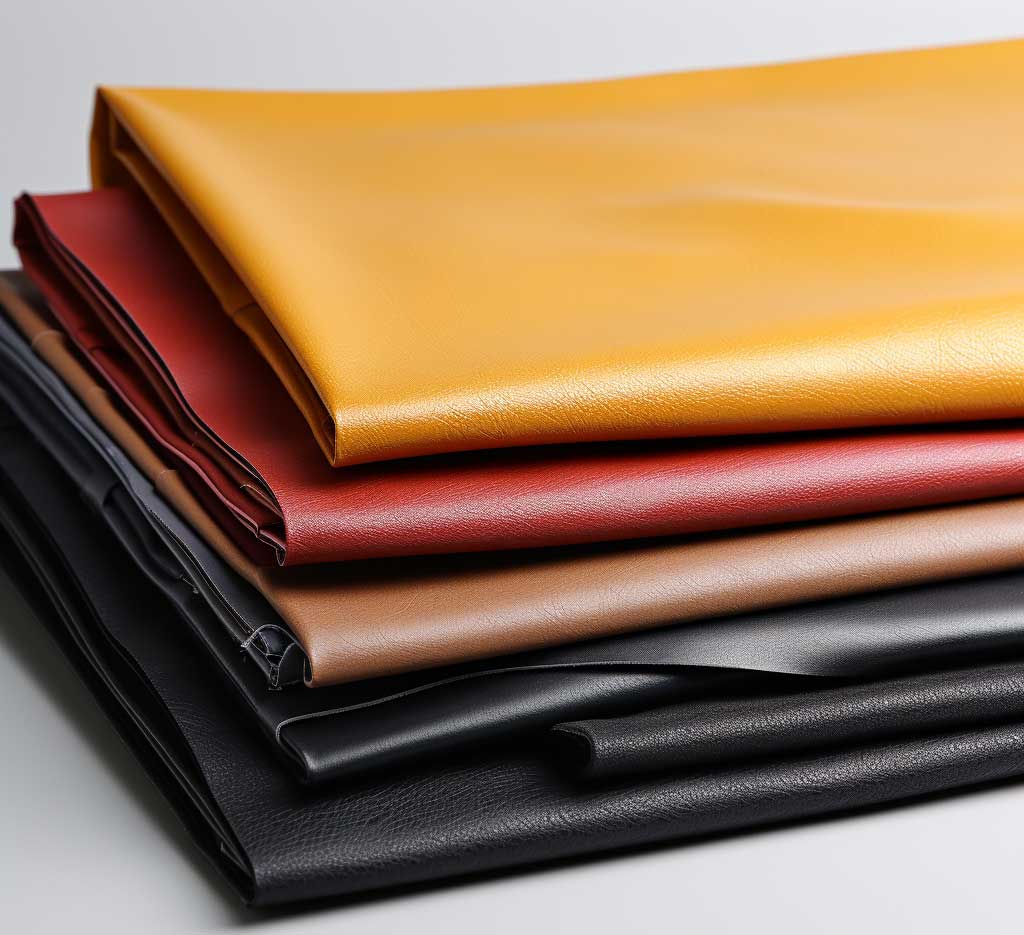
Illustrative image related to artificial leather fabric
How Does Cork Fabric Compare as an Alternative?
Cork fabric is an innovative and eco-friendly alternative that has gained traction in recent years. It is derived from the bark of cork oak trees, making it renewable and biodegradable. Cork is lightweight and water-resistant, making it suitable for a range of applications from bags to flooring. However, it may not have the same aesthetic appeal or flexibility as artificial leather, and its specialized bonding requirements can complicate manufacturing processes. Despite this, its sustainability credentials can attract environmentally conscious consumers.
Conclusion: How to Choose the Right Solution for Your Needs
When selecting a material for your B2B projects, consider the specific requirements of your products, including durability, cost, and target market preferences. Artificial leather fabric offers a compelling balance of affordability and versatility, making it suitable for a wide range of applications. However, for luxury markets, genuine leather may provide the prestige needed, while cork fabric can appeal to sustainability-focused consumers. Ultimately, understanding the nuances of each material will empower buyers to make informed decisions that align with their brand values and customer expectations.
Essential Technical Properties and Trade Terminology for artificial leather fabric
What Are the Key Technical Properties of Artificial Leather Fabric?
Artificial leather fabric, commonly known as faux leather or synthetic leather, possesses various technical properties that make it suitable for a wide range of applications, from fashion to upholstery. Understanding these properties is essential for B2B buyers to make informed purchasing decisions.
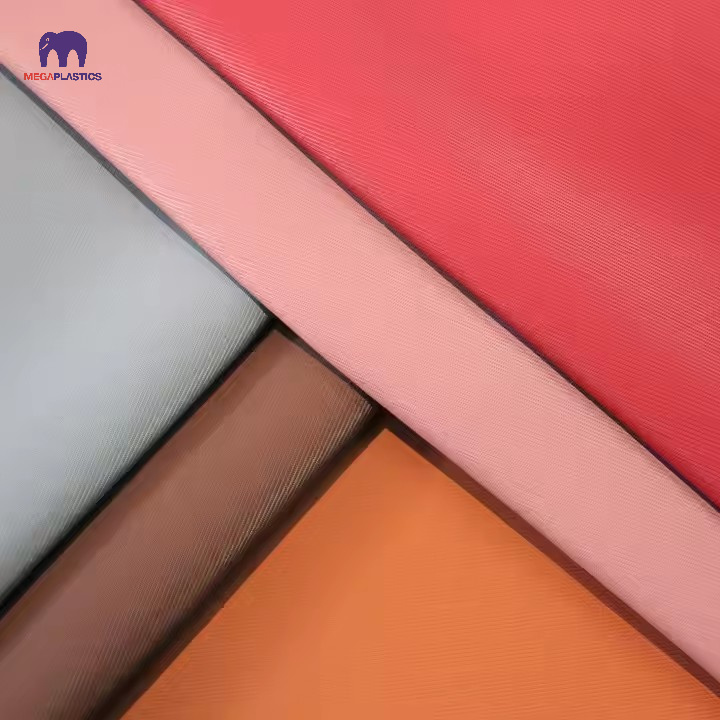
Illustrative image related to artificial leather fabric
1. Material Composition: What is Faux Leather Made Of?
Artificial leather is typically made from PVC (polyvinyl chloride) or PU (polyurethane) materials. PVC is more affordable and durable but less breathable, while PU offers a softer touch and better environmental properties. B2B buyers should consider the intended use of the fabric; for instance, upholstery may benefit from the durability of PVC, while fashion applications might require the softness of PU.
2. Durability: How Long Will It Last?
Durability in artificial leather fabric refers to its resistance to wear and tear, which is often measured in terms of tensile strength and abrasion resistance. Fabrics with higher durability ratings are better suited for high-traffic environments, such as commercial furniture or automotive interiors. B2B buyers should look for products that specify abrasion resistance ratings, typically measured in cycles (e.g., 15,000 cycles for moderate use).
3. Water Resistance: Is It Suitable for Outdoor Use?
Water resistance is a critical property, especially for applications in outdoor settings or where spills are common. Many artificial leather fabrics are treated to be waterproof, making them easy to clean and maintain. Buyers should verify the fabric’s water resistance rating, as this can significantly affect its lifespan and usability in different environments.
4. Breathability: Does It Allow Airflow?
Breathability refers to the ability of the fabric to allow air and moisture to pass through. Most artificial leather fabrics have low breathability, which can lead to discomfort in clothing or seating applications. B2B buyers should consider this property when selecting materials for products that will be worn for extended periods or used in warm climates.
5. Thickness and Weight: What Are the Specifications?
The thickness and weight of artificial leather fabric are critical specifications that affect its application. Generally measured in millimeters or ounces per square yard, thicker fabrics are often more durable but can be less flexible. Buyers should assess the thickness in relation to their specific needs, such as whether the fabric will be used for bags, upholstery, or garments.
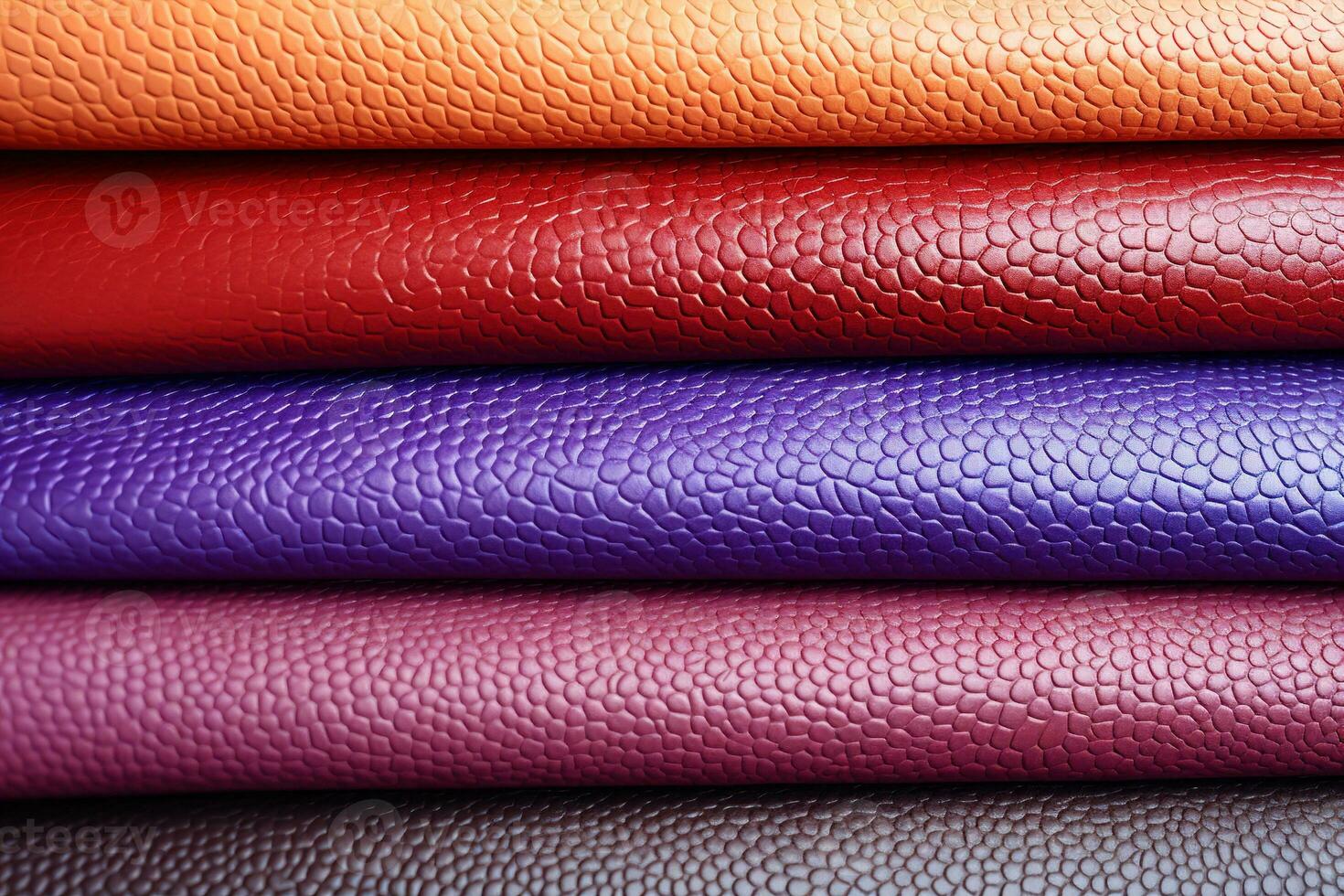
Illustrative image related to artificial leather fabric
What Are Common Trade Terms in the Artificial Leather Fabric Industry?
Understanding industry-specific terminology is crucial for effective communication between suppliers and buyers. Here are some common trade terms related to artificial leather fabric:
1. MOQ (Minimum Order Quantity): What Is the Minimum You Can Order?
MOQ refers to the smallest quantity of a product that a supplier is willing to sell. This is particularly important for B2B buyers who may want to test a new material before committing to larger orders. Knowing the MOQ helps in budgeting and inventory planning.
2. OEM (Original Equipment Manufacturer): Who Produces the Product?
OEM refers to companies that manufacture products that are sold under another brand’s name. For B2B buyers, understanding the OEM can provide insights into the quality and reliability of the artificial leather fabric, as reputable manufacturers often adhere to higher standards.
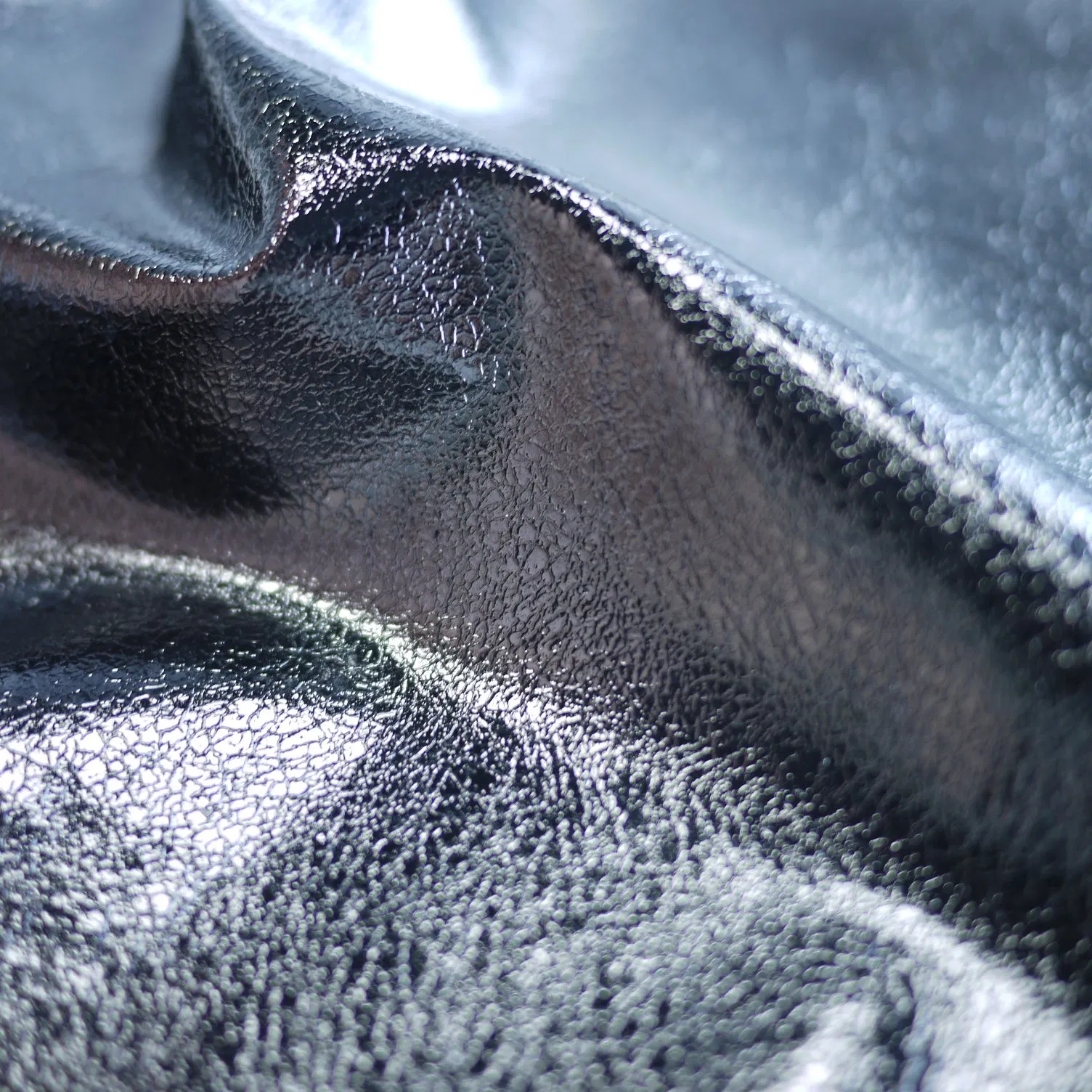
Illustrative image related to artificial leather fabric
3. RFQ (Request for Quotation): How Do You Get Pricing Information?
An RFQ is a document sent to suppliers requesting pricing and terms for specific products. B2B buyers should utilize RFQs to compare costs and service offerings from different suppliers, enabling them to make informed purchasing decisions.
4. Incoterms (International Commercial Terms): What Shipping Terms Should You Know?
Incoterms are international standards that define the responsibilities of buyers and sellers in shipping agreements. Familiarity with Incoterms such as FOB (Free on Board) or CIF (Cost, Insurance, and Freight) is essential for B2B buyers to understand shipping costs, risks, and delivery responsibilities.
5. Lead Time: How Long Will It Take to Receive Your Order?
Lead time refers to the time taken from placing an order to its delivery. Understanding lead times helps B2B buyers manage inventory levels and plan for production schedules. It’s crucial to clarify lead times with suppliers to avoid delays in project timelines.
By comprehending these essential technical properties and trade terminology, B2B buyers can navigate the artificial leather fabric market more effectively, ensuring they select the right materials for their specific needs.

Illustrative image related to artificial leather fabric
Navigating Market Dynamics and Sourcing Trends in the artificial leather fabric Sector
What Are the Current Market Dynamics and Key Trends in the Artificial Leather Fabric Sector?
The artificial leather fabric market is experiencing robust growth, driven by increasing consumer demand for sustainable and cruelty-free alternatives to genuine leather. This trend is particularly evident in regions such as Africa, South America, the Middle East, and Europe, where buyers are increasingly prioritizing ethical sourcing. Innovations in manufacturing processes, such as the use of recycled materials and bio-based polymers, are enhancing the appeal of artificial leather, making it a competitive choice for various applications including fashion, automotive upholstery, and furniture.
Technological advancements are also reshaping the sourcing landscape. Digital platforms are streamlining procurement processes, allowing B2B buyers to source materials more efficiently. AI-driven analytics are providing insights into market trends and consumer preferences, enabling companies to make informed purchasing decisions. Additionally, the rise of e-commerce is facilitating international trade, giving buyers access to a broader range of suppliers and materials.
In regions like Brazil and Germany, regulatory pressures and consumer awareness regarding environmental issues are influencing sourcing strategies. Companies are increasingly looking for suppliers who can demonstrate compliance with international standards and certifications. This dynamic is prompting a shift towards a more transparent supply chain, where buyers are keen to understand the origin of materials and the ethical practices of their suppliers.
How Does Sustainability Influence B2B Sourcing of Artificial Leather Fabrics?
Sustainability has become a cornerstone of sourcing strategies in the artificial leather fabric sector. The environmental impact of traditional leather production, which involves significant water usage and chemical treatments, has led to a surge in demand for eco-friendly alternatives. Artificial leather fabrics, particularly those made from recycled plastics or plant-based materials, offer a more sustainable option without compromising on quality.
Ethical sourcing is equally important for B2B buyers. Consumers are increasingly scrutinizing brands for their sustainability credentials, making it imperative for companies to partner with suppliers who uphold environmental standards. Certifications such as Global Recycled Standard (GRS) and Oeko-Tex Standard 100 are becoming essential for verifying the sustainability of materials. Buyers should prioritize suppliers that can provide these certifications to enhance their brand reputation and meet consumer demand for responsible products.
Furthermore, adopting a circular economy approach—where materials are reused and recycled—can yield significant benefits for businesses. Companies that implement sustainable practices not only reduce their carbon footprint but also position themselves as leaders in the market, appealing to a growing segment of environmentally conscious consumers.
What Is the Historical Context of Artificial Leather Fabric Development?
The evolution of artificial leather fabric dates back to the early 20th century when it was first developed as a cost-effective alternative to genuine leather. Initially, materials like rubber and plastic were used, but advancements in technology led to the creation of more sophisticated synthetic options, such as PVC and polyurethane. These materials provided a more realistic look and feel, broadening the applications of artificial leather across various industries.
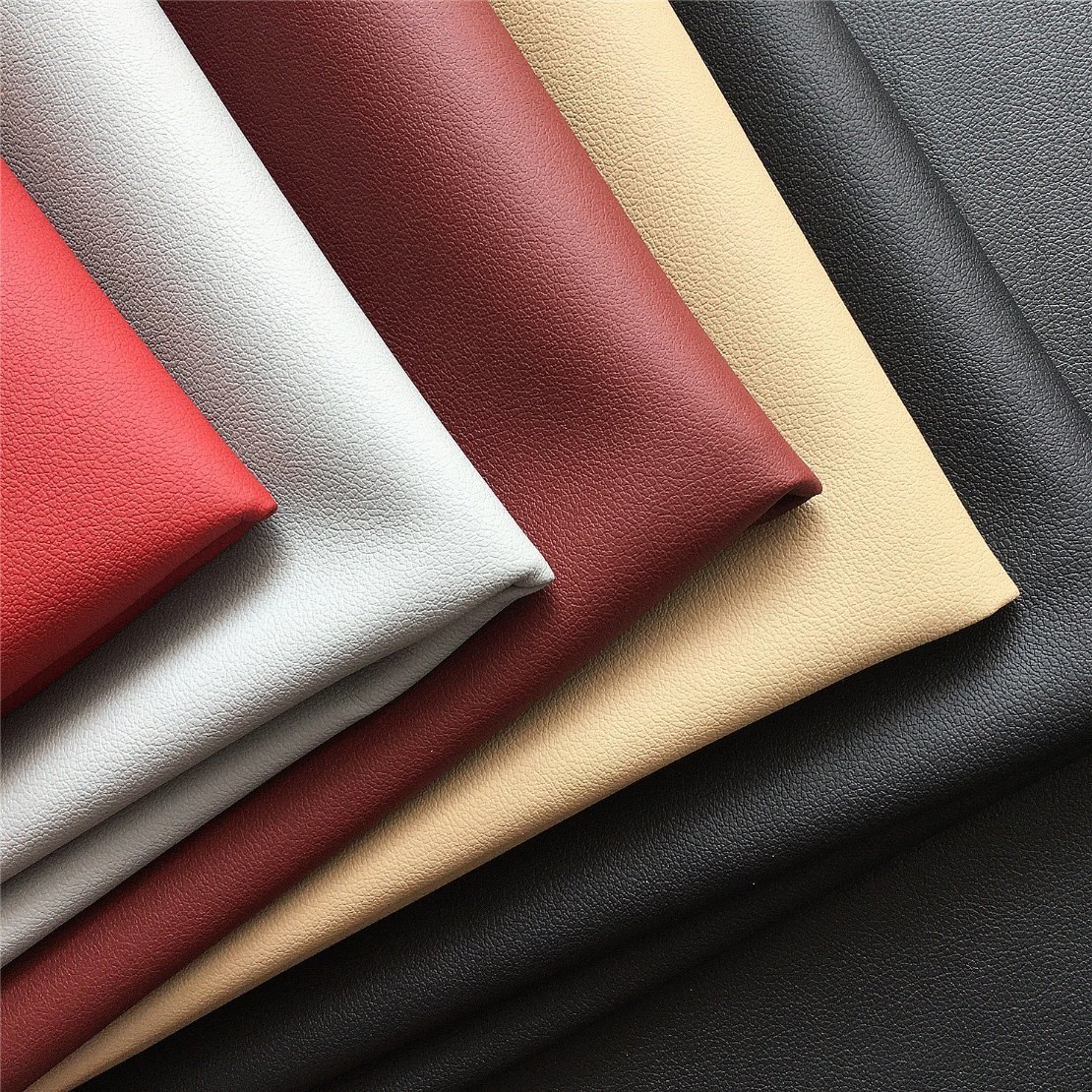
Illustrative image related to artificial leather fabric
In the latter half of the century, the environmental implications of leather production and the rising demand for vegan alternatives began to shape the market. The introduction of eco-friendly materials, such as plant-based leathers and those made from recycled plastics, marked a significant turning point. Today, artificial leather is not only seen as a viable substitute for genuine leather but also as a sustainable choice, reflecting changing consumer values and industry standards. This historical perspective highlights the ongoing evolution of artificial leather, driven by innovation and a growing emphasis on sustainability.
Frequently Asked Questions (FAQs) for B2B Buyers of artificial leather fabric
1. How do I choose the right type of artificial leather fabric for my business needs?
Choosing the right artificial leather fabric involves considering several factors such as the intended use, desired texture, and durability. Assess the specific requirements of your products—whether they are for upholstery, apparel, or accessories. For high-traffic applications, select a more robust material that can withstand wear and tear. Additionally, consider factors like water resistance and ease of cleaning. Request samples from suppliers to evaluate texture and quality before making a bulk purchase.
2. What are the most common applications for artificial leather fabric in B2B industries?
Artificial leather fabric is widely used in various B2B applications, including upholstery for furniture, automotive interiors, fashion items like bags and shoes, and protective gear. Its versatility makes it suitable for both indoor and outdoor products. In the automotive industry, for instance, it can provide a cost-effective alternative to genuine leather. Understanding your industry’s specific needs will guide you in selecting the appropriate fabric type and finish.
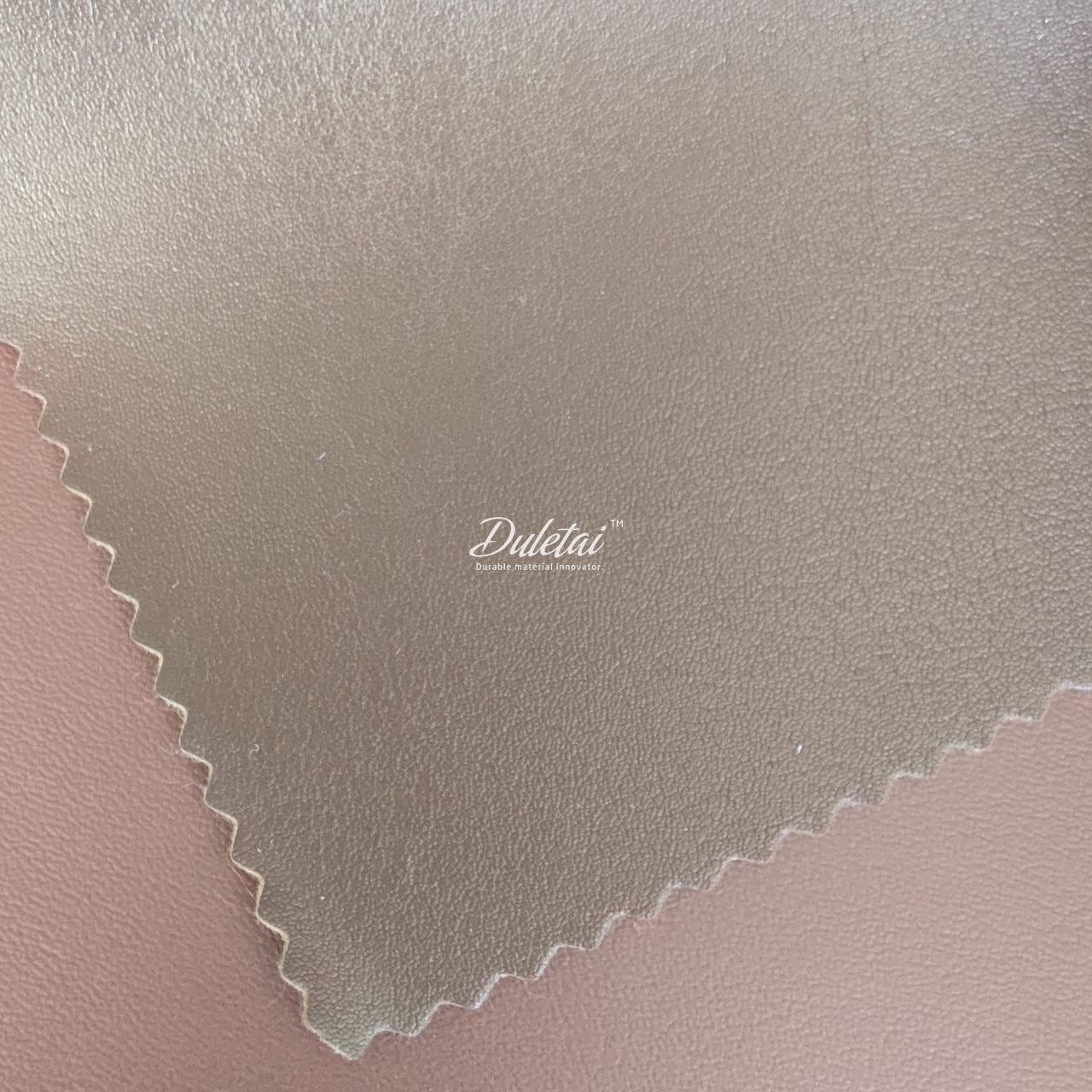
Illustrative image related to artificial leather fabric
3. What factors should I consider when vetting suppliers of artificial leather fabric?
When vetting suppliers, evaluate their reputation, production capabilities, and compliance with international standards. Request references and review their portfolio to gauge the quality of their products. It’s crucial to inquire about their sourcing practices, especially regarding sustainability and ethical manufacturing. Additionally, assess their responsiveness and customer service to ensure smooth communication throughout the procurement process.
4. Are there minimum order quantities (MOQs) when sourcing artificial leather fabric?
Most suppliers of artificial leather fabric impose minimum order quantities (MOQs) that can vary widely depending on the type of fabric and supplier policies. MOQs can range from a few yards for smaller manufacturers to hundreds for larger suppliers. Understanding these requirements is essential for budget planning. If your needs are below the MOQ, consider negotiating with suppliers or looking for distributors who can accommodate smaller orders.
5. What payment terms should I expect when sourcing artificial leather fabric internationally?
Payment terms can vary significantly among suppliers, but common practices include upfront payments, partial payments, or payment upon delivery. It’s advisable to negotiate terms that align with your cash flow and business operations. Be aware of additional costs such as shipping, customs duties, and taxes that may affect the total expense. Ensure all terms are documented in a contract to avoid misunderstandings.
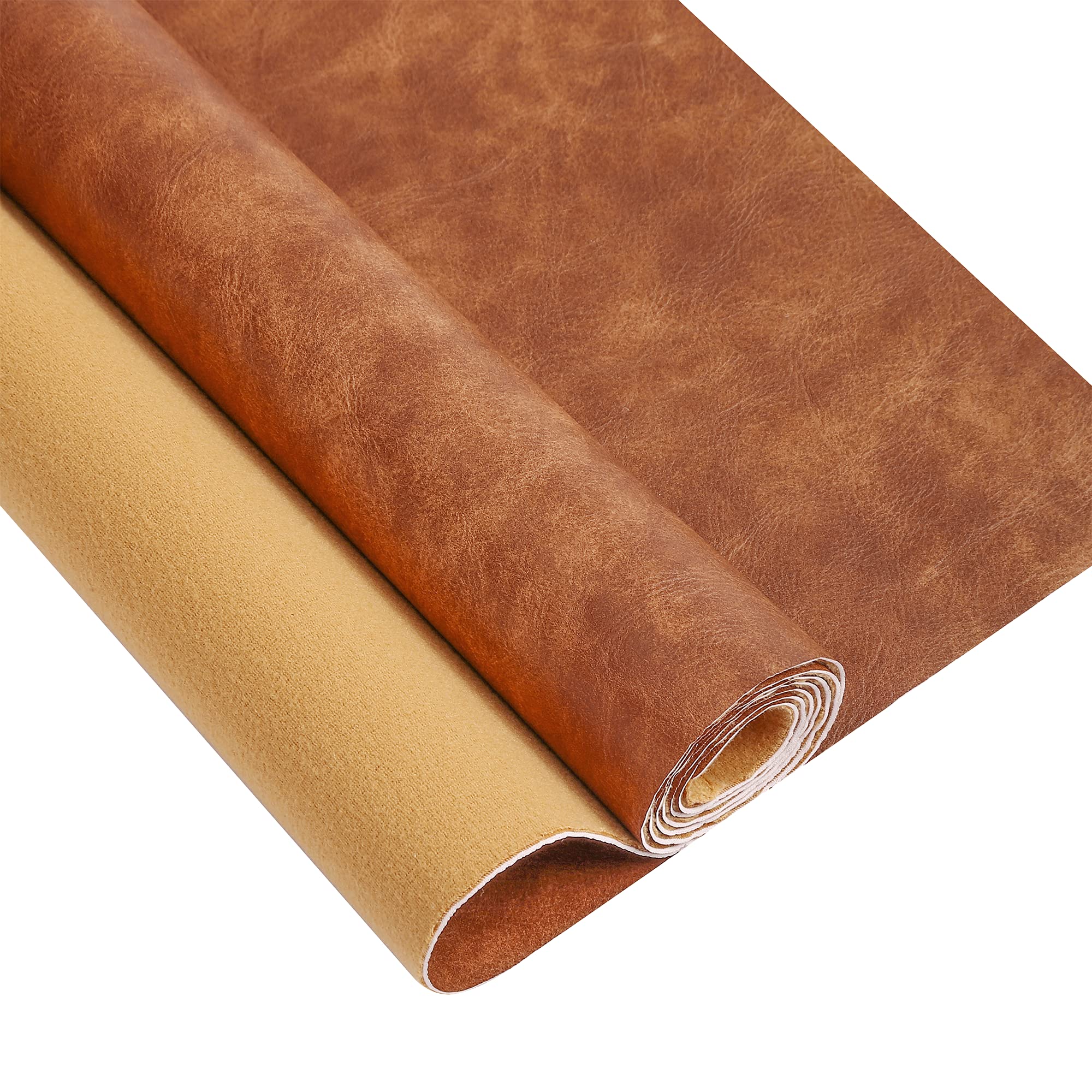
Illustrative image related to artificial leather fabric
6. How can I ensure quality assurance for artificial leather fabric purchases?
To ensure quality assurance, establish clear specifications for the materials you require, including color, texture, and performance characteristics. Request samples for testing before finalizing orders. Many suppliers offer inspection services or third-party quality checks to validate product compliance with your standards. Implementing a rigorous quality control process upon receipt of goods will help to address any discrepancies immediately.
7. What logistics considerations should I keep in mind when importing artificial leather fabric?
Logistics considerations include shipping methods, lead times, and customs regulations. Choose a reliable freight forwarder familiar with importing textiles to avoid delays and additional costs. Understand the shipping terms (e.g., FOB, CIF) and any documentation required for customs clearance. Planning for potential disruptions—such as customs inspections or shipping delays—will help you manage your supply chain more effectively.
8. How does the sustainability of artificial leather fabric impact sourcing decisions?
Sustainability is becoming increasingly important in sourcing decisions. Many buyers prefer suppliers that use eco-friendly materials and processes, such as PVC alternatives made from vegetable oils. Evaluate suppliers’ sustainability certifications and their commitments to reducing environmental impact. By prioritizing sustainable options, businesses can enhance their brand reputation and appeal to environmentally-conscious consumers, particularly in markets like Europe where eco-initiatives are highly valued.
Top 5 Artificial Leather Fabric Manufacturers & Suppliers List
1. Sallie Tomato – Faux Leather Collection
Domain: sallietomato.com
Registered: 2015 (10 years)
Introduction: Faux Leather collection by Sallie Tomato includes 66 products available in various colors and textures. Key features include:
– Vegan material, alternative to leather or cork fabric
– Soft and pliable
– Available in eight textures: Weave, Pebble, Legacy, Shimmer, Crocodile, Alligator, Ostrich, and Rugged
– Select Faux Leathers available in Lite Legacy, an ultra-thin material
– Sold by quarter yard…
2. Sewport – Faux Leather Solutions
Domain: sewport.com
Registered: 2015 (10 years)
Introduction: Faux leather, also known as synthetic leather, is a petroleum-based alternative to genuine leather. It is soft to the touch, water-resistant, and highly resistant to stains, making it easy to clean. While less durable than real leather, it is resistant to abrasions and cuts, making it suitable for upholstery in homes with children or pets. Faux leather can be produced in various colors, including …
3. Decorative Fabrics Direct – PU Leather & Faux Leather
Domain: decorativefabricsdirect.com
Registered: 2004 (21 years)
Introduction: PU Leather & Faux Leather | Vinyl Upholstery Fabric
– Terms: Free Shipping Coupon Code: SHIPFREE for Most $199 Orders
– Product Types: Faux Leather, Vinyl Upholstery Fabric
– Descriptions: Also known as artificial leather, synthetic leather, PU leather, fake leather, and imitation leather. Durable, easy to clean, and available in rich colors at a lower cost than genuine leather.
– Purchase Options…
4. Kiki Textiles – Faux Leather Fabric
Domain: kikitextiles.com
Registered: 2021 (4 years)
Introduction: Faux leather (pleather) fabric by the yard available in various colors and styles. Key features include:
– Price range: $13.99 – $16.49
– Color options: Beige, Black, Brown, Burgundy, Caramel, Chocolate, Cognac, Dusty Blue, Fuchsia, Gold, Gray, Hot Pink, Ivory, Kelly Green, Lavender, Magenta, Mauve, Mustard, Navy, Nude, Olive Green, Orange, Pink, Purple, Red, Royal Blue, Sage Green, Silver, Sky Bl…
5. Mood Fabrics – Faux Leather by the Yard
Domain: moodfabrics.com
Registered: 2001 (24 years)
Introduction: Faux Leather Fabric by the Yard | Ethical Alternative
Strategic Sourcing Conclusion and Outlook for artificial leather fabric
In conclusion, the strategic sourcing of artificial leather fabric presents a compelling opportunity for international B2B buyers across diverse markets, including Africa, South America, the Middle East, and Europe. The versatility and cost-effectiveness of faux leather make it an attractive alternative to genuine leather, particularly for applications in fashion, upholstery, and accessories. As global demand for sustainable and ethically produced materials continues to rise, sourcing from reputable manufacturers can enhance brand reputation while meeting consumer expectations.
Moreover, understanding the varying properties of faux leather—such as its durability, maintenance ease, and aesthetic appeal—empowers businesses to make informed decisions tailored to their specific needs. Engaging with suppliers who offer a diverse range of textures and finishes can facilitate unique product offerings that stand out in competitive markets.
Looking ahead, it is crucial for B2B buyers to remain proactive in exploring innovative materials and sustainable sourcing practices. By fostering strong partnerships with manufacturers and staying abreast of market trends, businesses can position themselves for long-term success in the dynamic landscape of artificial leather fabric. Embrace the opportunity to enhance your product line and meet evolving consumer demands—strategic sourcing is your pathway to growth.
Important Disclaimer & Terms of Use
⚠️ Important Disclaimer
The information provided in this guide, including content regarding manufacturers, technical specifications, and market analysis, is for informational and educational purposes only. It does not constitute professional procurement advice, financial advice, or legal advice.
While we have made every effort to ensure the accuracy and timeliness of the information, we are not responsible for any errors, omissions, or outdated information. Market conditions, company details, and technical standards are subject to change.
B2B buyers must conduct their own independent and thorough due diligence before making any purchasing decisions. This includes contacting suppliers directly, verifying certifications, requesting samples, and seeking professional consultation. The risk of relying on any information in this guide is borne solely by the reader.


